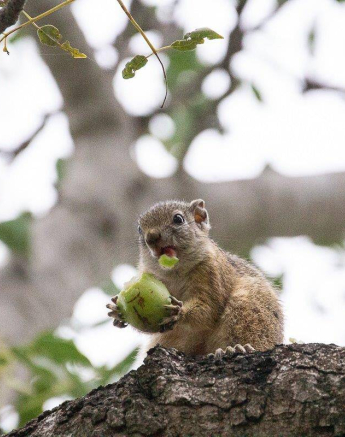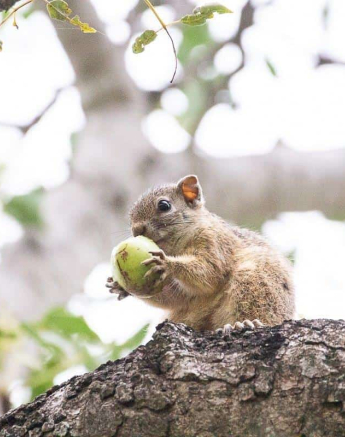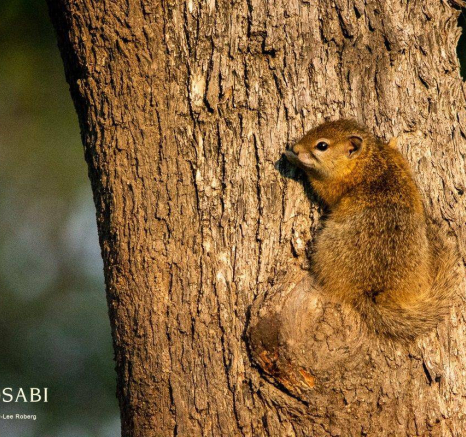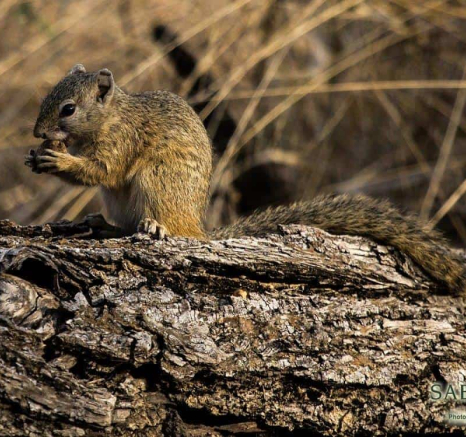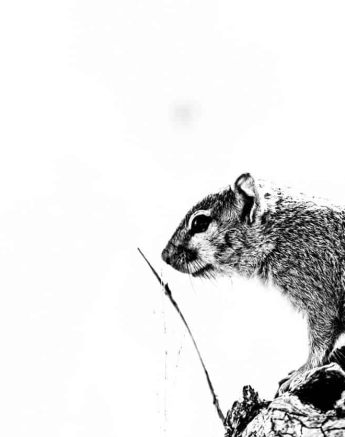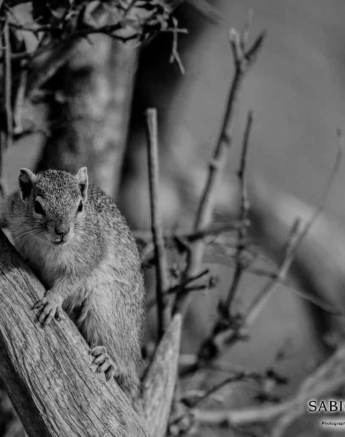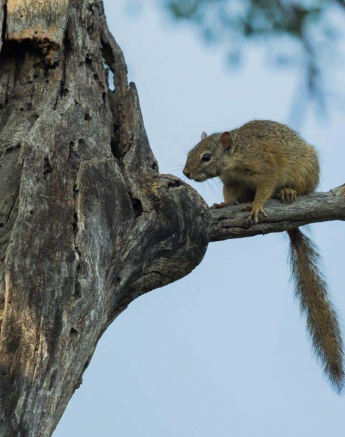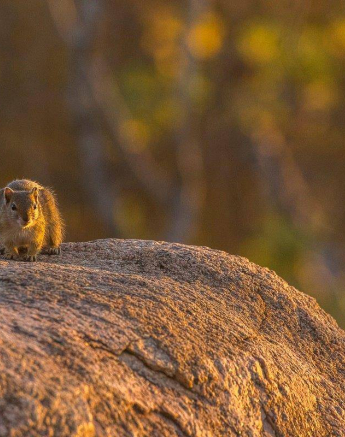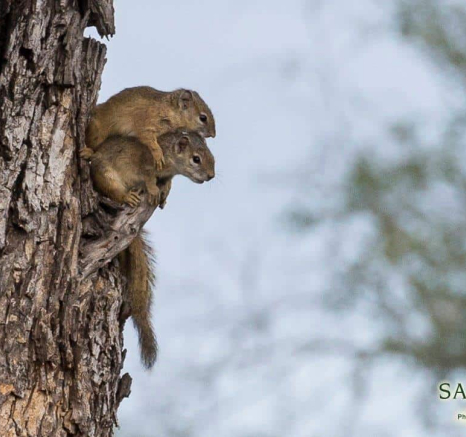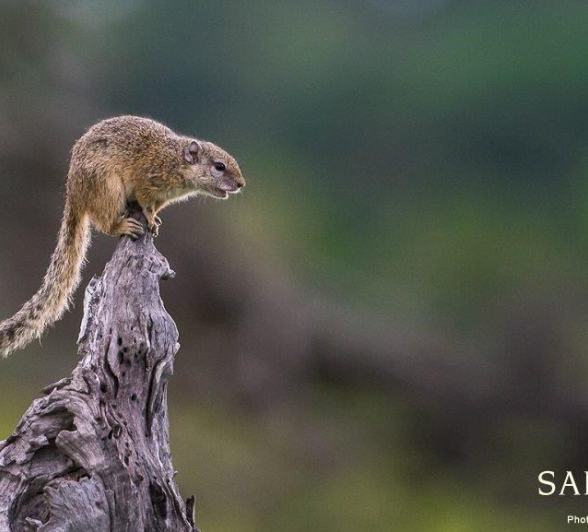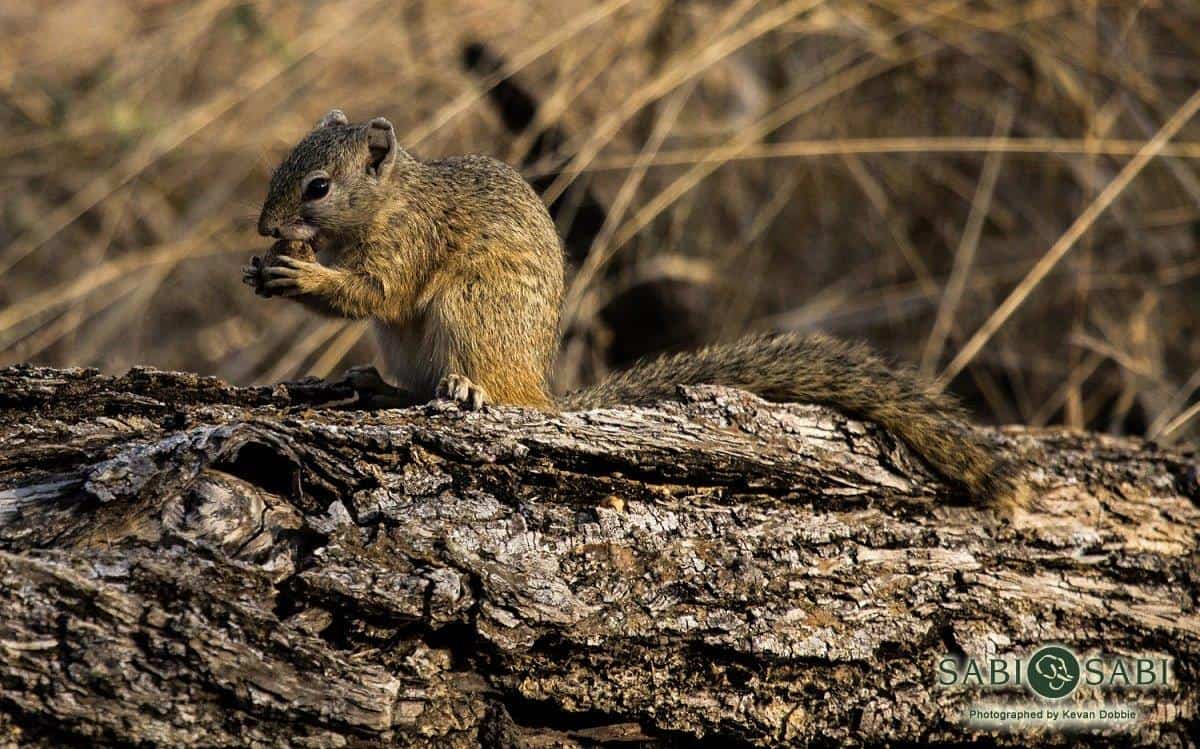Tree Squirrel
on Jun 21, 2019Species name: Smith’s Bush Squirrel/ Yellow-Footed Squirrel or commonly known as Tree Squirrel.
Scientific Name: Paraxerus cepapi
Weight: 200 grams (male will be slightly heavier)
Size: 35 cm long (tail is about half the length)
General habitat: Savanna woodlands, Aboreal (living in holes in trees)
Diet: Mainly herbivorous – seeds, flowers, nuts etc. but will also prey on insects as most rodents do.
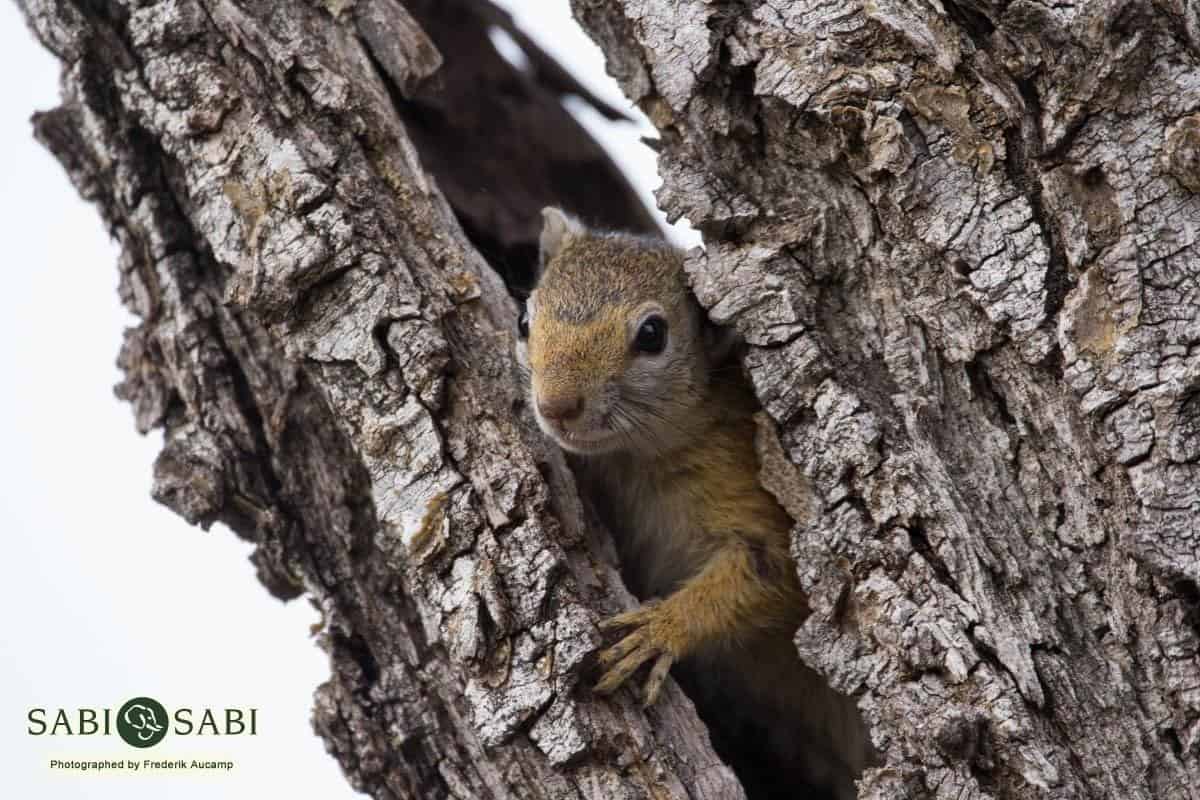
The Smith’s Bush Squirrel, also known as the Yellow-footed Squirrel or more commonly known around here as the Tree Squirrel, are small mammals you will find yourself spotting throughout your safari experience. Smaller than most squirrels you find around the world, my guest often mistake them for chipmunks. The name squirrel is derived from skiouros, an ancient Greek word meaning shadow-tailed, referring to their fluffy long tails.
They are gregarious little mammals and often live in family groups, grooming one another to pass on common scents, they will often nest together in their holes at night, making them diurnal mammals. It will be the male’s responsibility to defend the group’s territory by little vocal chatters and scent marking. But when defending young, all members of the family group will chase off unexpected individuals.
Squirrels are seasonal breeders with mating taking place in August and births often in October to November, gestation will be around 55 days with 1-3 blind young being born. By 6 weeks the young are weaned but by only 19 days of age they wonder out the nest to forage for food by themselves. They will become sexually mature at 6-9 months and will then be exiled from the family group by the dominate breeding pair.
When out here on safari in Sabi Sabi you will notice that your guide will be listening out for any warning calls of various animals indicating a predator of some kind in certain areas. Smith’s Bush Squirrels are one of those animals to listen out for, often calling when leopards have been seen passing through, but also animals like snakes and large birds of prey.
My Memorable Sighting
I have had many precious sightings with squirrels, seeing them all huddled up together in the morning sun trying to warm up; I have seen a family of squirrel all come out of their nesting hole together; I have seen male squirrels chasing each other around during breeding season. Always a precious sight to see, but I must say I have also many times given the credit to the Smith’s Bush Squirrel for helping me find some spectacular leopards.
Photo content
